Abstract
1. Plasma exudation and blood flow changes induced by intradermal injection of prostaglandins E2 (PGE2), I2 (PG12), D2 (PGD2) and F2 alpha (PGF2 alpha) were measured in rabbit dorsal skin by the use of [131I]-albumin and 133Xe. 2. Little plasma exudation was produced by any of the prostaglandins when injected alone. 3. Both PGE2 and PGI2 were potent at increasing blood flow, whereas PGF2 alpha and PGD2 produced an increase only at high doses. 4. All of the prostaglandins studied potentiated the plasma exudation induced by bradykinin. PGE2 and PGI2 had similar potent potentiating activity, whereas PGD2 and PGF2 alpha had activity at doses too high to be of biological significance. 5. Intradermal injections of arachidonate alone resulted in little plasma exudation but produced an increase in blood flow. Arachidonate potentiated bradykinin-induced plasma exudation. 6. Locally-injected indomethacin had no effect on basal blood flow and little effect on the exudation produced by bradykinin, but indomethacin did inhibit the vasodilatation and exudation potentiation produced by arachidonate. 7. PGE2 and PGI2 had similar potency in producing marked potentiation of plasma exudation induced by intradermal injection of zymosan. 8. In the reaction to zymosan, it is concluded that vasodilatation is the result of the release of arachidonate, which is subsequently coverted to either PGE2 or PGI2. These substances regulate the plasma exudation induced by independently-released vascular permeability-increasing mediators.
Full text
PDF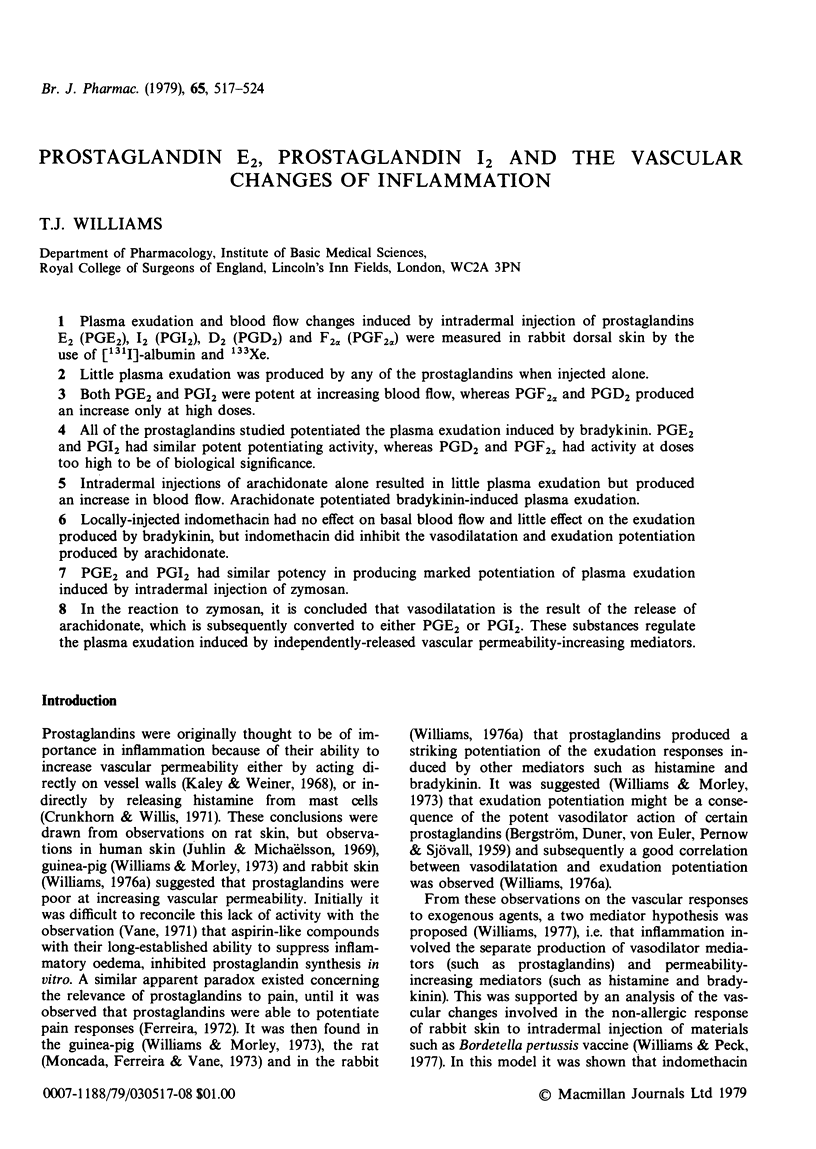
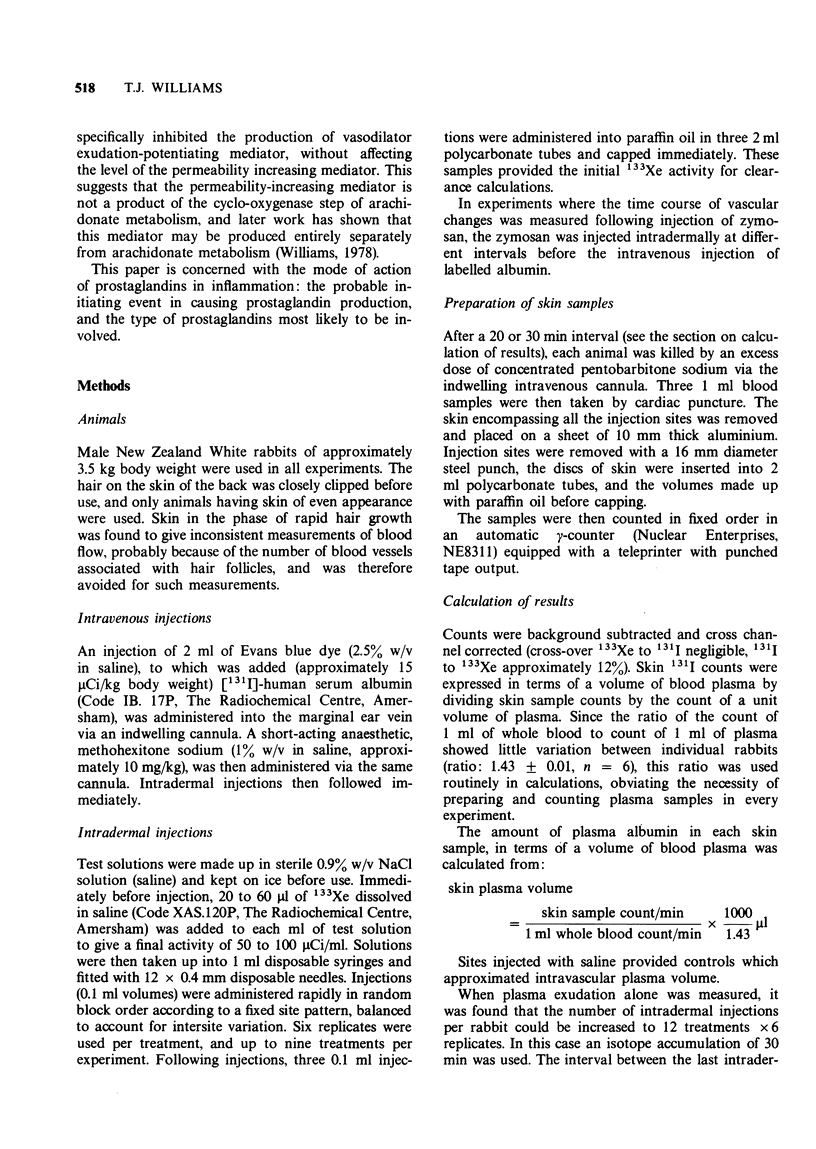
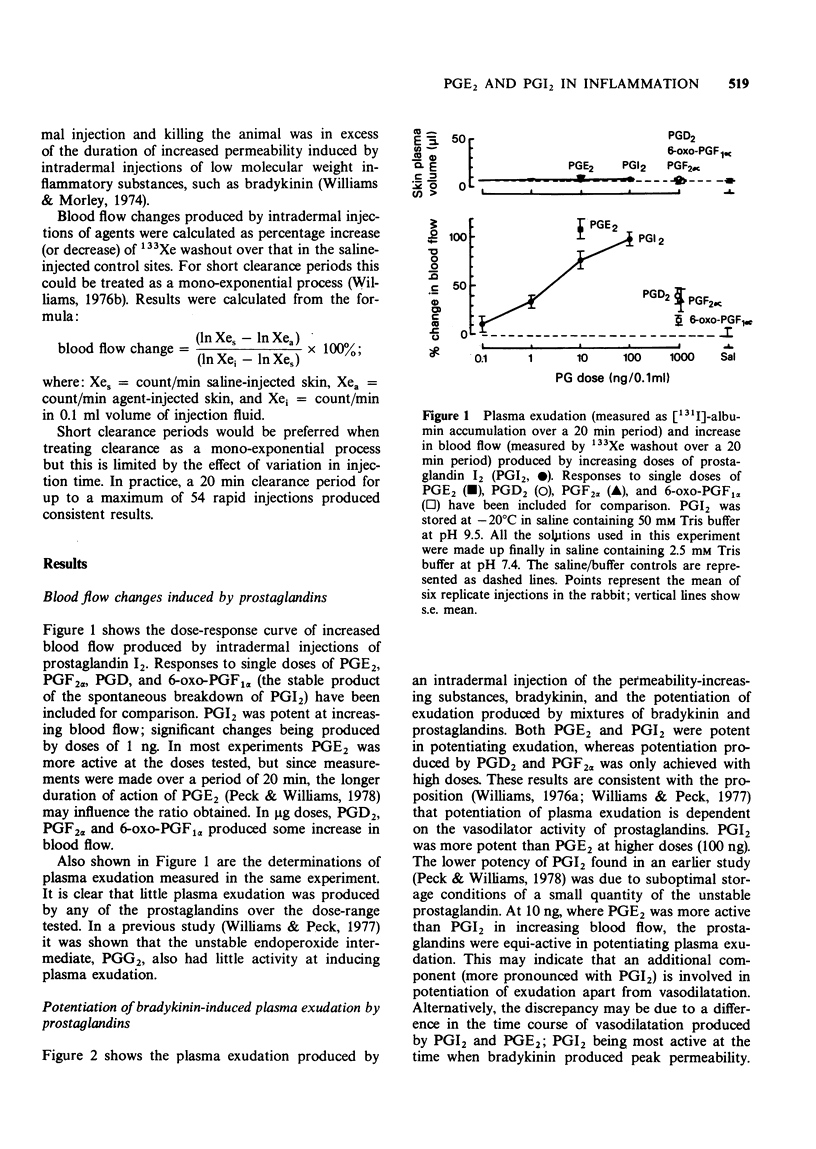
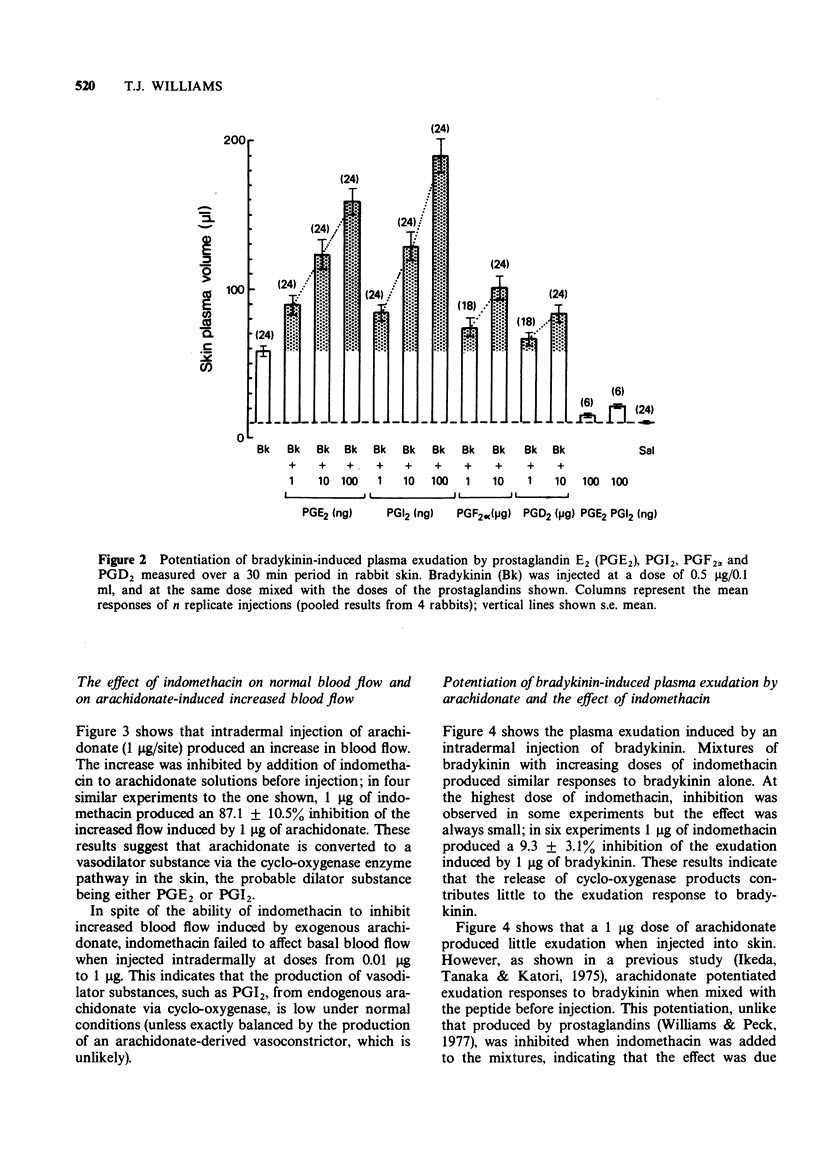
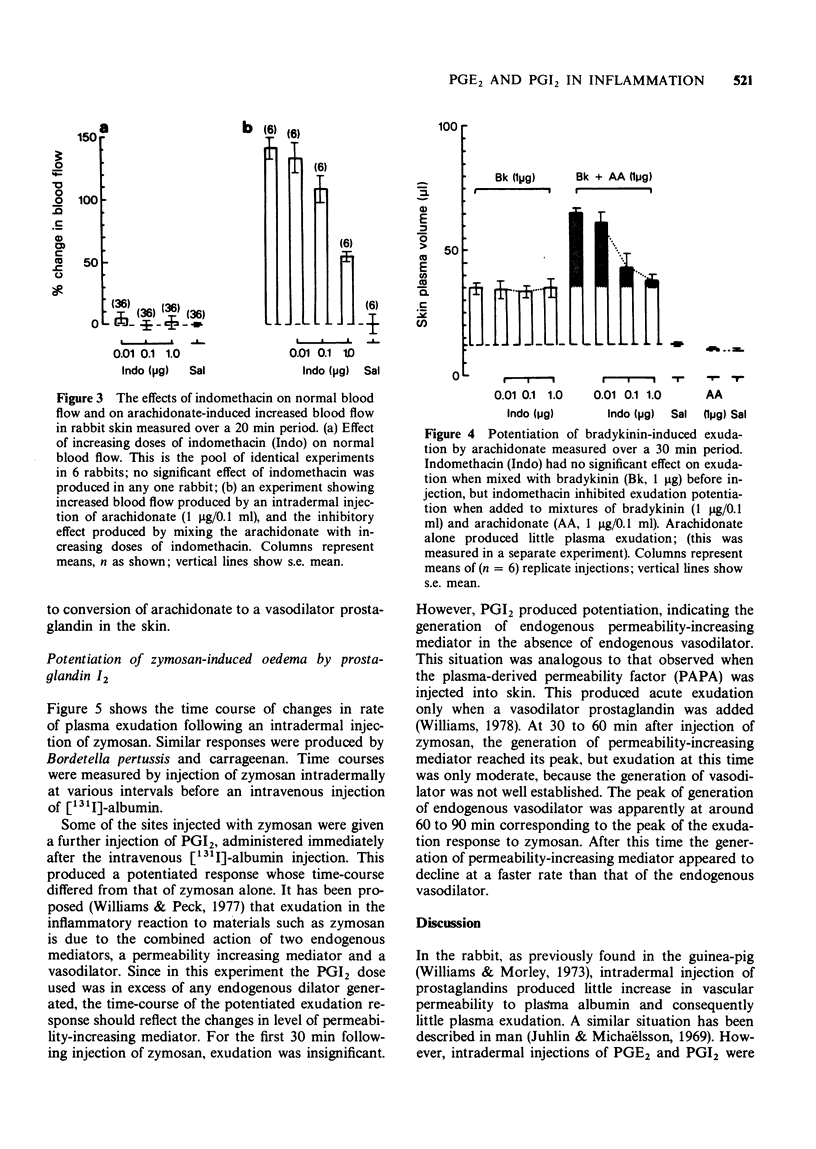
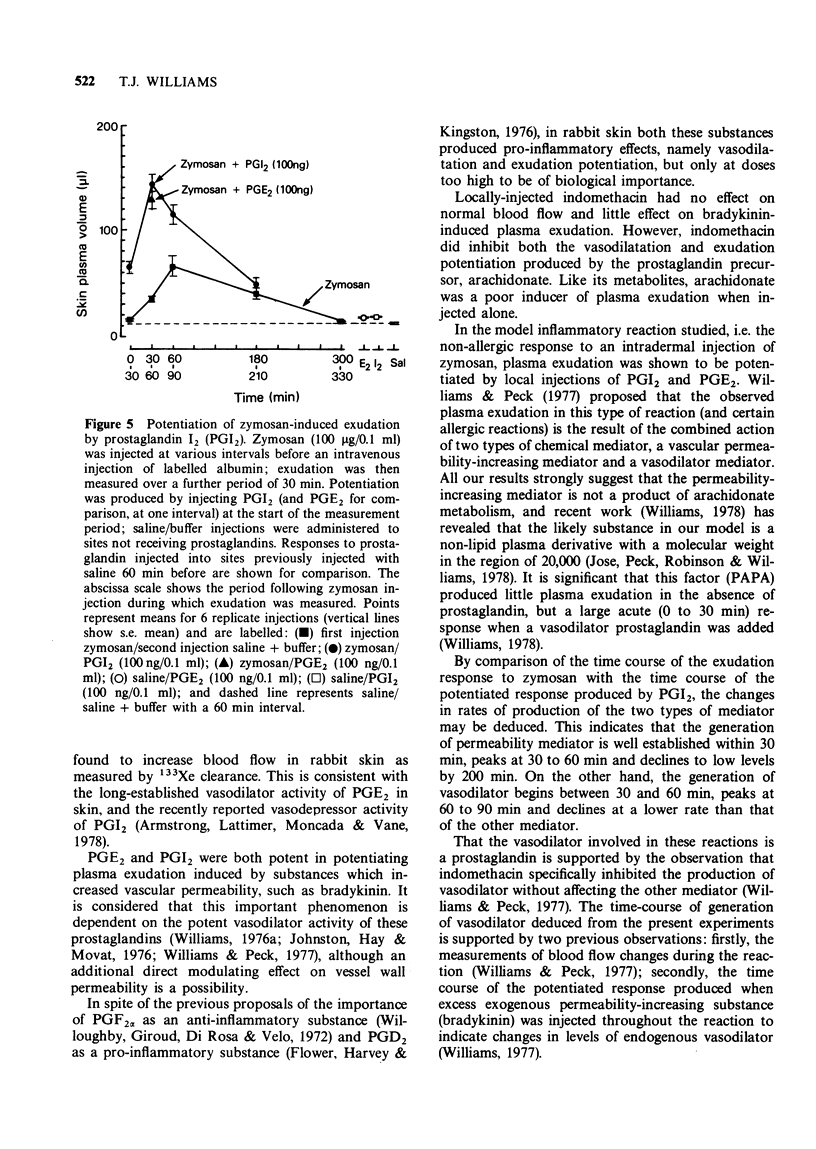
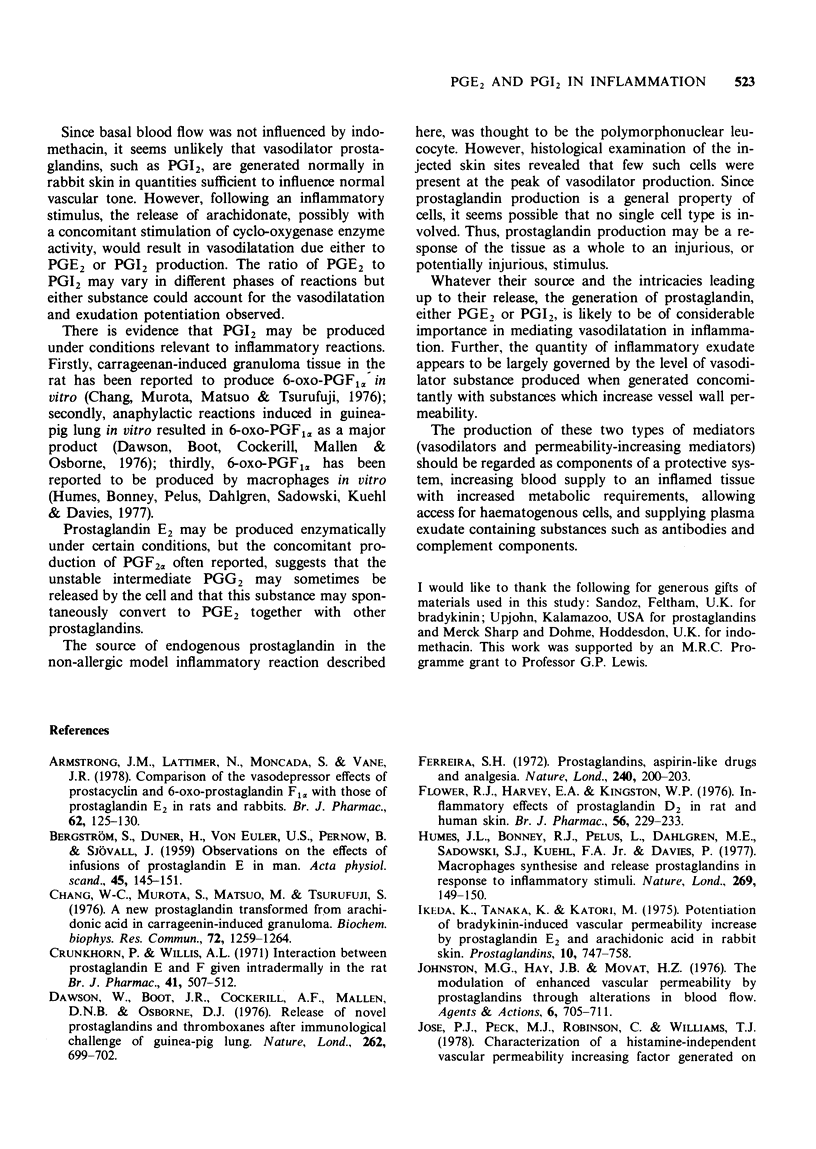
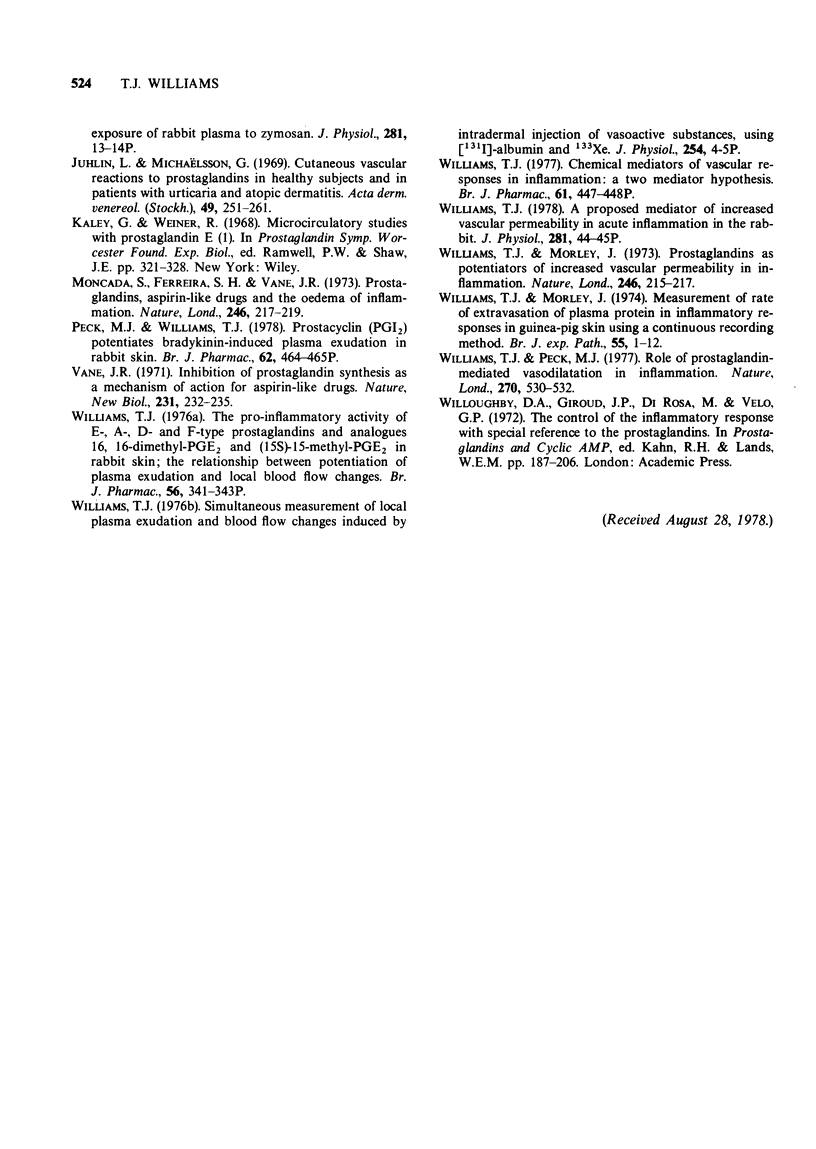
Selected References
These references are in PubMed. This may not be the complete list of references from this article.
- Armstrong J. M., Lattimer N., Moncada S., Vane J. R. Comparison of the vasodepressor effects of prostacyclin and 6-oxo-prostaglandin F1alpha with those of prostaglandin E2 in rats and rabbits. Br J Pharmacol. 1978 Jan;62(1):125–130. doi: 10.1111/j.1476-5381.1978.tb07014.x. [DOI] [PMC free article] [PubMed] [Google Scholar]
- BERGSTROM S., DUNER H., von EULER U., PERNOW B., SJOVALL J. Observations on the effects of infusion of prostaglandin E in man. Acta Physiol Scand. 1959 Mar 31;45:145–151. doi: 10.1111/j.1748-1716.1959.tb01686.x. [DOI] [PubMed] [Google Scholar]
- Chang W. C., Murota S., Matsuo M., Tsurufuji S. A new prostaglandin transformed from arachidonic acid in carrageenin-induced granuloma. Biochem Biophys Res Commun. 1976 Oct 18;72(4):1259–1264. doi: 10.1016/s0006-291x(76)80150-7. [DOI] [PubMed] [Google Scholar]
- Crunkhorn P., Willis A. L. Interaction between prostaglandins E and F given intradermally in the rat. Br J Pharmacol. 1971 Mar;41(3):507–512. doi: 10.1111/j.1476-5381.1971.tb08048.x. [DOI] [PMC free article] [PubMed] [Google Scholar]
- Dawson W., Boot J. R., Cockerill A. F., Mallen D. N., Osborne D. J. Release of novel prostaglandins and thromboxanes after immunological challenge of guinea pig lung. Nature. 1976 Aug 19;262(5570):699–702. doi: 10.1038/262699a0. [DOI] [PubMed] [Google Scholar]
- Ferreira S. H. Prostaglandins, aspirin-like drugs and analgesia. Nat New Biol. 1972 Dec 13;240(102):200–203. doi: 10.1038/newbio240200a0. [DOI] [PubMed] [Google Scholar]
- Flower R. J., Harvey E. A., Kingston W. P. Inflammatory effects of prostaglandin D2 in rat and human skin. Br J Pharmacol. 1976 Feb;56(2):229–233. doi: 10.1111/j.1476-5381.1976.tb07446.x. [DOI] [PMC free article] [PubMed] [Google Scholar]
- Humes J. L., Bonney R. J., Pelus L., Dahlgren M. E., Sadowski S. J., Kuehl F. A., Jr, Davies P. Macrophages synthesis and release prostaglandins in response to inflammatory stimuli. Nature. 1977 Sep 8;269(5624):149–151. doi: 10.1038/269149a0. [DOI] [PubMed] [Google Scholar]
- Ikeda K., Tanaka K., Katori M. Potentiation of bradykinin-induced vascular permeability increase by prostaglandin E2 and arachidonic acid in rabbit skin. Prostaglandins. 1975 Nov;10(5):747–758. doi: 10.1016/0090-6980(75)90003-9. [DOI] [PubMed] [Google Scholar]
- Johnston M. G., Hay J. B., Movat H. Z. The modulation of enhanced vascular permeability by prostaglandins through alterations in blood flow (hyperemia). Agents Actions. 1976 Nov;6(6):705–711. doi: 10.1007/BF02026092. [DOI] [PubMed] [Google Scholar]
- Jose P. J., Peck M. J., Robinson C., Williams T. J. Characterization of a histamine-independent vascular permeability-increasing factor generated on exposure of rabbit plasma to zymosan [proceedings]. J Physiol. 1978 Aug;281:13P–14P. [PubMed] [Google Scholar]
- Juhlin L., Michaëlsson G. Cutaneous vascular reactions to prostaglandins in healthy subjects and in patients with urticaria and atopic dermatitis. Acta Derm Venereol. 1969;49(3):251–261. [PubMed] [Google Scholar]
- Moncada S., Ferreira S. H., Vane J. R. Prostaglandins, aspirin-like drugs and the oedema of inflammation. Nature. 1973 Nov 23;246(5430):217–219. doi: 10.1038/246217a0. [DOI] [PubMed] [Google Scholar]
- Peck M. J., Williams T. J., Lewis G. P. Prostacyclin (PGI2) potentiates bradykinin-induced plasma exudation in rabbit skin [proceedings]. Br J Pharmacol. 1978 Mar;62(3):464P–465P. [PMC free article] [PubMed] [Google Scholar]
- Vane J. R. Inhibition of prostaglandin synthesis as a mechanism of action for aspirin-like drugs. Nat New Biol. 1971 Jun 23;231(25):232–235. doi: 10.1038/newbio231232a0. [DOI] [PubMed] [Google Scholar]
- Williams T. J. Chemical mediators of vascular responses in inflammation: a two mediator hypothesis [proceedings]. Br J Pharmacol. 1977 Nov;61(3):447P–448P. [PMC free article] [PubMed] [Google Scholar]
- Williams T. J., Morley J. Measurement of rate of extravasation of plasma protein in inflammatory responses in guinea-pig skin using a continuous recording method. Br J Exp Pathol. 1974 Feb;55(1):1–12. [PMC free article] [PubMed] [Google Scholar]
- Williams T. J., Morley J. Prostaglandins as potentiators of increased vascular permeability in inflammation. Nature. 1973 Nov 23;246(5430):215–217. doi: 10.1038/246215a0. [DOI] [PubMed] [Google Scholar]
- Williams T. J., Peck M. J. Role of prostaglandin-mediated vasodilatation in inflammation. Nature. 1977 Dec 8;270(5637):530–532. doi: 10.1038/270530a0. [DOI] [PubMed] [Google Scholar]
- Williams T. J. Proceedings:Simultaneous measurement of local plasma exudation and blood flow changes induced by intradermal injection of vasoactive substances, using [131I]albumen and 133Xe. J Physiol. 1976 Jan;254(1):4P–5P. [PubMed] [Google Scholar]


